Robert Browning
Browning Around
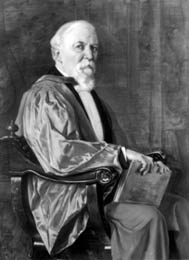 Tell me about the library that you head.
Tell me about the library that you head.
Well, the Armstrong Browning Library is the world’s biggest collection of material on Robert and Elizabeth Browning. It was started by the great Professor Armstrong in 1913, when there was a huge sale of Browning material in Britain, following the death of their son. At the time Armstrong couldn’t afford to buy any of it, but he got hold of a catalogue, and over the next forty years he systematically tracked down all the purchases. In some cases material was donated, in other cases he found out what the price was and then proceeded to raise the money.
How did he start as a Browning scholar? I gather he was a complete obsessive.
One imagines him being born as a Browning scholar. [Laughs] It is true he was a complete obsessive – great things are done by obsessives like him. He was a genius at fundraising.
How has the collection developed over the years?
It’s been developing constantly. For instance, in 2004 I went over to a sale at Christie’s in London and I bought the Browning-Wedgwood correspondence. After Elizabeth’s death there was a kind of abortive romance between Robert and Julia Wedgwood, which was broken off rather suddenly after 18 months – nobody’s very clear why. She wrote a letter saying ‘I think it wise if we don’t meet again’ and he wrote back and said ‘exactly so’, or something like that. Perhaps he’d made a pass at her and she ‘slapped his face’, but this is unlikely; the reason is, I think, that he had made it clear in the correspondence that there was never going to be a replacement for Elizabeth. She was the love of his life. He let Julia understand that any relationship they might have must be on those terms, and I suspect that those terms were not good enough. Julia was the granddaughter of Josiah Wedgwood, and a powerful woman in her own right; I don’t think she was going to take second fiddle to anyone, alive or dead.
How did their full correspondence come to be available?
There is the possibility that the letters ‘from Julia’ were in fact holographs – copies made by the sender – or whether they are the originals. They’d been the property of a very wealthy New York family – although I was told that, recently at least, they’d been stored in the Channel Islands. The Wedgwood-Browning correspondence was a very important acquisition for Baylor. 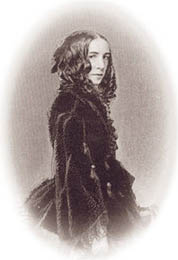 At the same auction sale I bought the manuscript of Elizabeth Barrett Browning’s An Essay on Mind, which she wrote before her marriage. And, earlier this year, a London bookseller got in touch to tell me they had two notebooks of Elizabeth’s, written by her between the ages of thirteen and sixteen. Quite honestly, my first reaction was suspicion: where had they been all these years, to surface suddenly on the market now?’ But we did establish their provenance, and we were very pleased to buy them.
At the same auction sale I bought the manuscript of Elizabeth Barrett Browning’s An Essay on Mind, which she wrote before her marriage. And, earlier this year, a London bookseller got in touch to tell me they had two notebooks of Elizabeth’s, written by her between the ages of thirteen and sixteen. Quite honestly, my first reaction was suspicion: where had they been all these years, to surface suddenly on the market now?’ But we did establish their provenance, and we were very pleased to buy them.
How do you go about tracing provenance work?
In this case, we looked back at previous London sales but the process was somewhat complicated by the fact that the notebooks were being held by a bookseller in New York on behalf of a client who did not wish their identity to be revealed. In fact, when they arrived to us they arrived with American stamps on, they’d never been to London at all.
Did people have to come in and independently verify the handwriting?
We had enough examples of her handwriting to do that ourselves – Rita Paterson in our own library is an expert on the subject. In the past we’ve had one or two ‘try-ons ‘- there was one Browning first edition, and somebody has written ‘Robert Browning’ inside the cover in Sepia ink, in the hope that we would be fooled – but, no.
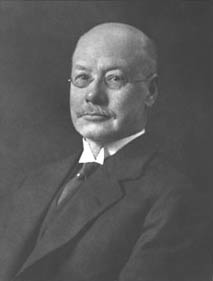 Do you have examples of the Thomas Wise forgeries then?
Do you have examples of the Thomas Wise forgeries then?
Yes we do. We have several – I myself purchased for the library two Thomas Wise forgeries, one an Arnold forgery, the other a Browning.
Do you think all of the Wise forgeries have been identified?
I’ve no idea. I think once you’re alerted they’re pretty easy to spot. He seemed to have used the same press all of the time and so the typeface gives the game away.
At the time he was doing it he would have been the last person to come under suspicion, given that he was head of the Bibliographical Society.
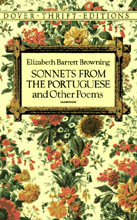 Yes, he was considered one of the great bibliographers. One of his most famous forgeries was Elizabeth’s Sonnets from the Portuguese, supposedly a hitherto unknown, very early edition. Wise forgeries are now collected in their own right – they’re not cheap by any means. In some cases they’re more expensive than the things he imitated.
Yes, he was considered one of the great bibliographers. One of his most famous forgeries was Elizabeth’s Sonnets from the Portuguese, supposedly a hitherto unknown, very early edition. Wise forgeries are now collected in their own right – they’re not cheap by any means. In some cases they’re more expensive than the things he imitated.
To go back to the journal of the young Elizabeth, did it reveal anything new about her life?
Yes it did. It has some trial lines of ‘The Battle of Marathon’ which suggest she was working on it a couple of years before -’The Battle of Marathon’ was her first published work, her father paid to have it privately published. And so we now know she was working on it aged about sixteen. One notebooks contains a mock epic poem of the family’s journey from Hope End to Brighton; I got hold of the Royal Atlas, an edition from the 1880s, and discovered to my delight that no-one had altered the roads for a hundred years in Britain – because of the railways. So if you manage to blot out the railways from your mind, what you’re looking at is a map of the British road system in 1800. And I was able to trace the Barretts’ exact route from this poem.
Have you done that route yourself?
No I have not. I know a man called Steven Jeffcote, whose hobby is walking the routes of Browning poems. He’s followed the entire route of The Ring and the Book for example – on foot. He’s a retired professor of endocrinology from London University and this is his hobby. At the moment he’s walking the entire length of the Pyrenees, taking 38 days to do it, sleeping out in the rain if necessary – I mean I don’t think I would do this. [Laughter] He gave us a tour of Arezzo, taking us through The Ring and the Book, showing us where Pompilia had stayed, where her house was – or where it was believed to have been – where her monk lover lived, the bit of the wall over which they climbed to escape. It was essentially a true story written up by Browning, and so you can actually trace, physically, every bit of it. Our tour of Arezzo was great fun – it was much more fun than it would have been just wandering around the old town.
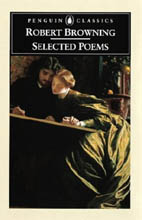 What’s your sense of the personalities of Elizabeth and Robert?
What’s your sense of the personalities of Elizabeth and Robert?
You know what Henry James said about Browning, don’t you? He said, ‘I have come to the conclusion there are two Robert Brownings: there is the deeply sensitive, witty, intelligent person who wrote the poems, and there is this extraordinary man going around London parties and booming at people.’ A lot of people commented that the Robert Browning they met socially was not the Robert Browning they were meeting in the poems. He was a very complex person, a very interesting person. Elizabeth allowed her hobbies and her passions to come much more directly into her poetry. She wrote passionate poems condemning slavery in America. She believed passionately in Napoleon III in Italian unity. Her other ‘thing’ was spiritualism – Robert wrote ‘Mr Sludge, The Medium’ as part of a family quarrel.
Another element of the Baylor collection I’d like to hear about is 19th century women poets.
Cynthia Burgess, our head of books pointed out that to understand Elizabeth Barrett Browning you needed to know about women’s poetry as a whole in the 19th century. She had acquired about 30 titles when I came on the scene two years ago, building this side of the collection up quietly without trying to spend too much money. I said ‘Go for it – this is an interesting project’. I didn’t realise at that stage just how rare it was and that virtually nobody else was doing it. The standard of poetry being written by most women in the 19th century was dominated by religious and love themes and a lot of it was pretty bad, but that only highlights how courageous and unusual Elizabeth was with some of her controversial subjects.
You are also President of the George MacDonald Society. Has that interest filtered into the Baylor collections?
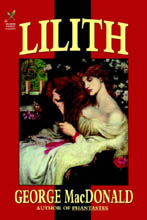 Let me talk about MacDonald’s significance first of all, briefly – what MacDonald does is to take the German Romantic tradition of fairies, goblins, all that sort of stuff and… I was going to say ‘Anglicise’, I suppose I’d better say ‘Scoticise’… he’s working closely, of course, with Kingsley and with Dodgson, they’re all exchanging manuscripts. The original manuscript of Alice in Wonderland was sent to MacDonald, who read it aloud to his children, and it was Greville MacDonald (George’s son) who said there ought to be 10,000 copies of it – so George wrote back to say, ‘I think we can publish this.’ [Laughs] I used to think that Victorian fantasy was something that sort of arose spontaneously out of the right social conditions – it wasn’t; it was a gang of friends, in effect a close literary clique, circulating their stuff. What MacDonald does in particular is to produce the grand supernatural fantasies. This was very much a minority interest, then in the 20th century his writing was taken up by another group of writers – the Inklings – Charles Williams, Tolkien, and most importantly, C.S. Lewis, and interest in the genre expands and expands. Now what have you got dominating the scene? J.K. Rowling, Tolkien, Philip Pullman. Fantasy is probably the most successful literary genre in the English speaking world, it’s quite astounding. And MacDonald is important in all of this, and very much a writer’s writer.
Let me talk about MacDonald’s significance first of all, briefly – what MacDonald does is to take the German Romantic tradition of fairies, goblins, all that sort of stuff and… I was going to say ‘Anglicise’, I suppose I’d better say ‘Scoticise’… he’s working closely, of course, with Kingsley and with Dodgson, they’re all exchanging manuscripts. The original manuscript of Alice in Wonderland was sent to MacDonald, who read it aloud to his children, and it was Greville MacDonald (George’s son) who said there ought to be 10,000 copies of it – so George wrote back to say, ‘I think we can publish this.’ [Laughs] I used to think that Victorian fantasy was something that sort of arose spontaneously out of the right social conditions – it wasn’t; it was a gang of friends, in effect a close literary clique, circulating their stuff. What MacDonald does in particular is to produce the grand supernatural fantasies. This was very much a minority interest, then in the 20th century his writing was taken up by another group of writers – the Inklings – Charles Williams, Tolkien, and most importantly, C.S. Lewis, and interest in the genre expands and expands. Now what have you got dominating the scene? J.K. Rowling, Tolkien, Philip Pullman. Fantasy is probably the most successful literary genre in the English speaking world, it’s quite astounding. And MacDonald is important in all of this, and very much a writer’s writer.
Do you think people read all his work, or do they confine themselves to the fantasies?
They confine themselves almost entirely to the fantasy – very few people read the adult novels. A.N. Wilson gave a speech at the ceremony to unveil a plaque on the wall of MacDonald’s house in London, and to everybody’s bafflement he said that the greatest MacDonald book for him was At the Back of the North Wind. Which is not my favourite.
What is your favourite?
Lilith. It’s one of the most extraordinary novels of all time.
The Selected Poems of Robert Browning are available in Penguin Classics (ISBN 0140437266, £9.99 PBK); Elizabeth Barrett Browning’s Sonnets from the Portuguese are available from Dover Publications (ISBN 0486270521, US$1 PBK); George MacDonald’s Lilith is published by Wildside Press (ISBN 1587159740, £9.99 PBK).
© Jennie Renton 2005

Comments